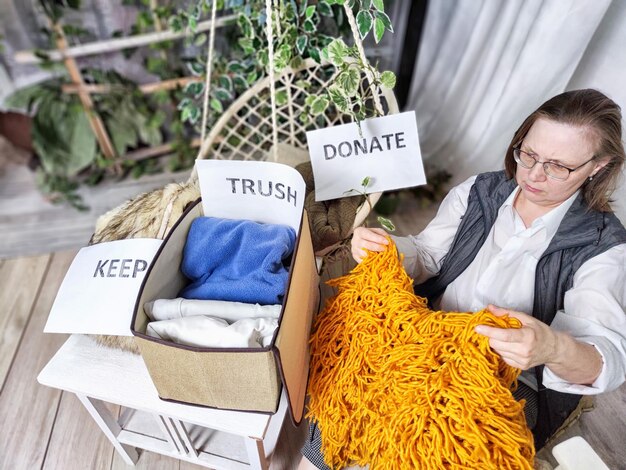5 Red Flags to Watch Out For When Donating to Hurricane Relief: Protecting Yourself from Scams
As the aftermath of a hurricane can leave a trail of devastation in its wake, it’s only natural that people would want to help those affected. However, the generosity of donors can also make them vulnerable to scams. Here are five red flags to be on the lookout for when considering a hurricane relief donation:
Unsolicited Contacts:
Be wary of unsolicited phone calls, emails, or text messages from organizations asking for donations. Legitimate charities usually don’t solicit this way. Instead, they often have established donation channels on their websites or through other reputable organizations.
Pressure Tactics:
Request for Cash or Gift Cards:
Avoid giving cash or gift cards to anyone claiming to be collecting for hurricane relief. Reputable organizations prefer checks, credit card payments, or online donations through their official websites.
No Verification of Identity:
If a charity representative cannot provide clear identification or information about their organization, be cautious. Verify their identity by calling their main office or visiting their official website.
5. Overly Complex Donation Process:
A complicated donation process can be a warning sign of potential scams. Legitimate charities make it easy for you to donate and provide transparency regarding how your contribution will be used.
By being aware of these red flags, you can ensure that your donation goes to the right place and helps those who truly need it during hurricane relief efforts.

Hurricane Relief: The Importance of Giving and Protecting Yourself from Scams
Hurricanes, with their destructive winds and heavy rainfall, can cause catastrophic damage to communities and homes, leaving thousands without basic necessities like food, water, and shelter. During these trying times, the spirit of generosity and compassion is at an all-time high, as people open their hearts and wallets to offer assistance. However, it’s essential to be aware that scammers take advantage of this kindness by creating fraudulent organizations and campaigns in an attempt to deceive well-intentioned donors. In this article, we’ll discuss the importance of donating during hurricane relief efforts, and provide you with valuable information on how to
Protect Yourself from Scams
.
In the aftermath of a hurricane, there’s an urgent need for financial resources to support those affected. Donations can help provide essential services such as food, water, medical aid, and temporary housing. Furthermore, they enable long-term rebuilding efforts to restore communities and help families get back on their feet. However, the proliferation of scams during these times can make it difficult for potential donors to discern which organizations are legitimate and trustworthy.
Identifying Scams
To avoid falling prey to scams, it’s crucial to be vigilant and informed. Here are some common red flags:
- Requesting Donations in Cash or Prepaid Cards: Legitimate organizations will not ask for cash or prepaid cards as a method of donation.
- Soliciting Personal Information: Scammers may ask for sensitive personal information, such as social security numbers or bank account details, to steal your identity.
- Unsolicited Contacts: Scammers may contact you via email, phone call, or social media with a sense of urgency or emotional appeal.
To ensure your donation goes to a trusted organization, follow these steps:
Tips for Safe and Effective Donations
- Verify the Organization: Research the organization to ensure it is legitimate and trustworthy. Check their website, social media presence, and Better Business Bureau (BBB) rating.
- Secure Online Donations: Make donations through secure websites, and avoid clicking on links in unsolicited emails or text messages.
- Don’t Share Personal Information: Do not provide sensitive personal information, such as social security numbers or bank account details, to organizations that ask for them.
Additional Resources
For more information, visit the Federal Trade Commission (FTC) and the National Center for Disaster Fraud’s websites. These resources provide valuable guidance on identifying and reporting scams during disaster relief efforts.

Red Flag #1: Unsolicited Emails or Social Media Messages
Description of the Tactic: Cybercriminals often use unsolicited emails or social media messages to trick individuals into donating to fictitious charities or causes. These unsolicited contacts can appear to be from reputable organizations, but in reality, they are attempting to steal your money or personal information.
Warning Signs:
- Lack of a reputable website or email address: Be wary if the organization asks you to donate through an unfamiliar email address, as this could be a phishing attempt.
- Poor grammar and spelling: Messages containing numerous spelling errors or poor grammar can be a red flag, as legitimate organizations typically have professional communications.
- Requests for personal information: Be cautious if the message asks for sensitive personal information, such as your Social Security number or credit card details. Legitimate organizations typically do not ask for this information via email or social media.
Solution:
Verify the Organization’s Legitimacy through Research
Before donating, take some time to research the organization. Check their website and look for their official email address and phone number. You can also search for the charity’s name along with “complaints” or “scam” to see if there are any red flags.
Donate Directly to Well-Known Charities or Their Official Websites
When in doubt, donate directly to well-known charities or their official websites. This is the safest way to ensure your donation goes to a legitimate organization and not to cybercriminals. Remember, always be cautious when receiving unsolicited emails or social media messages asking for donations.

I Red Flag #2: Pressure Tactics and Urgent Deadlines
This fundraising tactic is designed to evoke a sense of urgency or pressure, often resulting in impulsive donations. Donation requests with urgent deadlines can come in various forms, such as emails titled “Last Chance to Donate” or phone calls that demand an immediate response. However, it’s essential to be cautious when faced with such solicitations.
Description of the Tactic:
Pressure tactics and urgent deadlines can be used to manipulate donors into giving larger sums of money than they might otherwise consider. These tactics can create a sense of fear or guilt, leading individuals to believe that their donation is necessary to save a life, prevent a crisis, or help those in dire need. The urgency can be further amplified by the use of emotional language and vivid imagery.
Warning Signs:
Requests for large sums can be a red flag when accompanied by pressure tactics. Organizations that frequently use this approach may rely on donor desperation rather than long-term commitment and trust. Lack of transparency about how the funds will be used is another warning sign. If an organization cannot clearly explain how your donation will make a difference, it may be best to seek out a more reputable charity.
Solution:
Research the organization before making a donation. Look into their mission, values, and past financial records. Reach out to other donors or volunteers for their opinions. Ask questions about the organization’s programs and how your contribution will be used. By taking a thoughtful approach, you can ensure that your charitable giving aligns with your personal values and supports organizations that make a real difference.
Give at your own pace. While it’s essential to respond to those in need, it’s equally important to make informed decisions. Avoid being pressured into giving more than you can afford or are comfortable with. Remember that true change often takes time, and your support, given wisely and thoughtfully, can make a lasting impact.
Additional Resources:
For more information on how to protect yourself from fraudulent charities and donation scams, visit the websites of organizations like the link and the link. These resources can provide valuable tips and tools to help you make informed charitable giving decisions.

Red Flag #3: Request for Personal Information
Description of the Tactic: Scammers often use donation solicitations as a ruse to obtain your personal information, including social security numbers or bank account details. These requests may come via suspicious emails, unsecured websites, or unsolicited phone calls.
Suspicious Emails:
Be wary of emails that ask you to click a link and provide sensitive information. Legitimate organizations do not typically request this information via email. If you’re unsure, contact the organization directly using the phone number or address listed on their official website.
Unsecured Websites:
Verify the security of a website before entering personal information. Look for “https” at the beginning of the URL, which signifies a secure connection. Be aware that some scammers can manipulate this by creating false “https” addresses.
Unsolicited Phone Calls:
Organizations will not typically ask for personal information during unsolicited phone calls. If you receive a call asking for such information, hang up and contact the organization using their official contact details to confirm if the call was legitimate.
Warning Signs:
- Request for sensitive information
- Suspicious emails, unsecured websites, or unsolicited phone calls
- Pressure to donate immediately
- Lack of transparency about how the funds will be used
Solution:
Avoid sharing sensitive information unless you initiated the contact with a trusted organization.
Use a trusted payment method: Consider using a credit card when making donations online, as it offers some fraud protection. Be sure to keep a record of your transaction for future reference.
Verify the organization’s identity: Research the organization thoroughly before making a donation. Look for their official website, contact information, and any reviews or ratings from reputable organizations.
Stay Informed:
Keep yourself informed about current scams and fraud tactics to better protect yourself from potential threats.

Red Flag #4: Phishing Scams
Phishing scams are a type of cyber attack that aim to trick individuals into revealing sensitive information, such as usernames, passwords, and credit card numbers. Vishing, a voice version of phishing, uses phone calls instead of emails or websites. However, we will focus on email and website phishing in this section.
Description of the Tactic:
Phishing emails or websites appear to be from reputable organizations, such as banks, social media platforms, or e-commerce sites. The fraudulent messages often urge recipients to click on a link or download an attachment containing malware. For instance, a phishing email might claim that your account has been compromised and ask you to reset your password by clicking on a link. Unfortunately, this link leads to a fake website designed to steal your login credentials or install malware.
Warning Signs:
- Misspelled URLs: Phishing websites often have slightly misspelled or misleading domain names. For example, instead of “facebook.com,” the phishing site might use “facbook.com” or “facebook-login.com.”
- Suspicious Attachments: Be wary of unexpected email attachments, especially if they are in formats like .exe or .zip. These files might contain malware that infects your device when opened.
- Poor Grammar and Spelling: Legitimate organizations usually take great care to ensure their communications are grammatically correct and free of spelling errors. Phishing emails, on the other hand, often contain numerous mistakes.
Solution:
- Hover over links without clicking to see the real URL: Before clicking on a link in an email, hover your mouse over it without clicking. This will reveal the true destination of the link at the bottom left corner of your browser window.
- Use antivirus software: Install and regularly update reputable antivirus software to protect your device against phishing emails and websites.
- Be cautious with attachments: Do not open email attachments from unknown senders or those that seem suspicious. Instead, contact the sender directly through a trusted communication channel to confirm their intent.
By staying informed about phishing tactics and following best practices for securing your digital communications, you can significantly reduce the risk of falling victim to these fraudulent schemes. Remember, even reputable organizations will never ask for sensitive information via email or text message – always verify any such requests through an independent channel before sharing your details.
Additional Resources:

VI. Red Flag #5: Charities That Aren’t Registered or Have a Questionable History
When it comes to donating to charities, transparency and accountability are key. One red flag that should raise suspicion is organizations that do not have a proven track record or are not registered as charities. These groups may be operating with ill intentions, mismanaging funds, or worse. Here’s a description of this tactic, some warning signs to look out for, and how to protect yourself from potentially fraudulent charities:
Description of the Tactic:
Charities that aren’t registered or have a questionable history can be hard to spot. Some may claim to be charitable organizations, but in reality, they are fronts for scams or unscrupulous businesses. Others might be legitimate, but new and still building a solid foundation. However, the lack of transparency about their financial information, no contact information, or unprofessional website or marketing materials can be major warning signs.
Warning Signs:
- Lack of transparency about financial information: A legitimate charity will be open and transparent about their finances, providing an annual report and making it easy for donors to see where the money is going.
- No contact information: If a charity can’t be reached by phone, email, or mail, it’s a bad sign. Legitimate charities will make it easy for potential donors to get in touch with them.
- Unprofessional website or marketing materials: A poorly designed or outdated website, as well as unpolished marketing materials, can indicate a lack of professionalism and could be a red flag.
Solution:
To protect yourself from potentially fraudulent charities, there are several steps you can take: (1) Use link to research organizations before donating. (2) Ask for proof of registration and tax-exempt status. (3) Contact the link or your state’s link for more information about the charity’s history and any potential issues.
By following these steps, you can make informed decisions about where to donate your hard-earned money and help ensure that your charitable contributions are making a real difference in the world.

V Conclusion
As the aftermath of a hurricane brings relief efforts to those in need, it’s crucial for potential donors to exercise caution and diligence before contributing. Fraudulent organizations may attempt to exploit the situation by creating fake charities or soliciting donations under false pretenses. Such actions not only divert much-needed resources from legitimate organizations but also inflict emotional and financial harm on unsuspecting individuals.
Protect Yourself
To safeguard your generosity, we strongly encourage you to conduct thorough research on any charity before making a donation. By verifying their legitimacy and reputation, you’ll not only ensure that your contribution reaches those in need but also protect yourself from falling victim to a potential scam.
Additional Resources
Here are some reputable resources that can help you verify charities and make informed decisions:
These organizations offer valuable information, including financial reports, ratings, and reviews that can help you make an informed decision.
Empower Your Generosity
By taking the time to do your due diligence, you’ll not only make a difference in the lives of those affected by hurricanes but also help preserve the integrity of charitable giving. Remember that your generosity is a powerful force for good, and we’re here to empower you to use it wisely.

VI Call to Action
As we conclude this informative article on various types of scams and their red flags, it’s crucial not to overlook the importance of sharing this knowledge with your dear ones. Boldly highlight the significance of this action by spreading awareness among your immediate circle, especially those who may be more vulnerable to such fraudulent activities.
Empowering Loved Ones
By sharing this article, you can equip your family and friends with essential knowledge to protect themselves from falling prey to scams. Remember that even the most technologically savvy individuals can be susceptible to these deceptive practices.
Sharing is Caring
It’s a small yet impactful gesture that can potentially save someone from financial harm or emotional distress. Social media platforms, email, text messages, and face-to-face conversations are all effective channels for sharing this content with those around you.
A Final Reminder
Lastly, a final reminder: Always remember to double-check before donating or sharing sensitive information online. Be it charity, investment opportunities, or unexpected requests from friends, ensure that your contributions are making a positive difference and not falling into the wrong hands.
Protect Yourself and Others
Let this article serve as a reminder to always stay informed and vigilant against potential scams. Together, we can create a safer online community for all.







